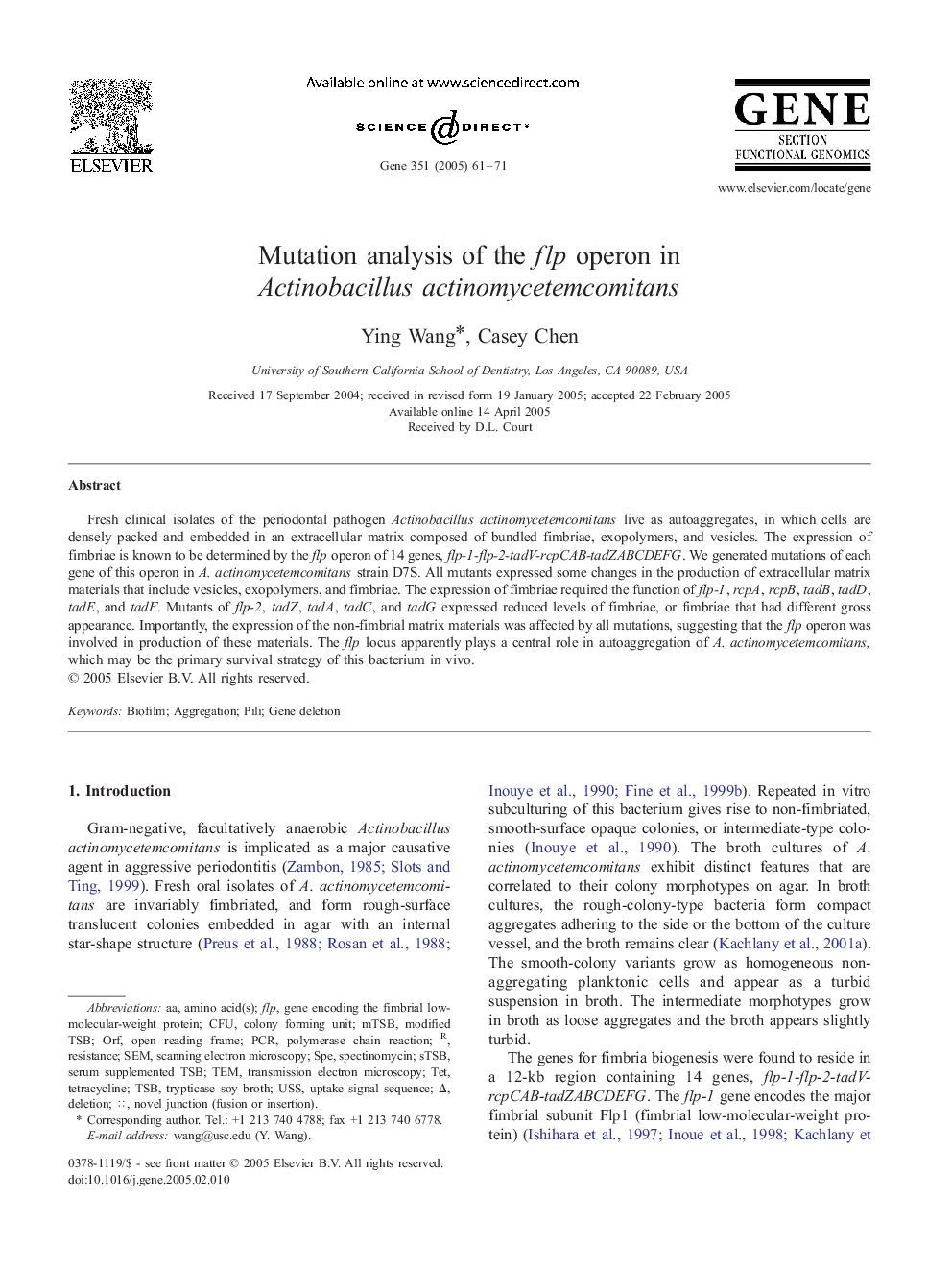| Article ID | Journal | Published Year | Pages | File Type |
|---|---|---|---|---|
| 9127072 | Gene | 2005 | 11 Pages |
Abstract
Fresh clinical isolates of the periodontal pathogen Actinobacillus actinomycetemcomitans live as autoaggregates, in which cells are densely packed and embedded in an extracellular matrix composed of bundled fimbriae, exopolymers, and vesicles. The expression of fimbriae is known to be determined by the flp operon of 14 genes, flp-1-flp-2-tadV-rcpCAB-tadZABCDEFG. We generated mutations of each gene of this operon in A. actinomycetemcomitans strain D7S. All mutants expressed some changes in the production of extracellular matrix materials that include vesicles, exopolymers, and fimbriae. The expression of fimbriae required the function of flp-1, rcpA, rcpB, tadB, tadD, tadE, and tadF. Mutants of flp-2, tadZ, tadA, tadC, and tadG expressed reduced levels of fimbriae, or fimbriae that had different gross appearance. Importantly, the expression of the non-fimbrial matrix materials was affected by all mutations, suggesting that the flp operon was involved in production of these materials. The flp locus apparently plays a central role in autoaggregation of A. actinomycetemcomitans, which may be the primary survival strategy of this bacterium in vivo.
Keywords
∷USSCFUMTSBTSBFLPTETSPEORFamino acid(s)novel junction (fusion or insertion)spectinomycinTemBiofilmTetracyclineAggregationdeletionGene deletionPilitrypticase soy brothopen reading frameSEMResistanceScanning electron microscopyTransmission electron microscopypolymerase chain reactionPCRcolony forming unit
Related Topics
Life Sciences
Biochemistry, Genetics and Molecular Biology
Genetics
Authors
Ying Wang, Casey Chen,
